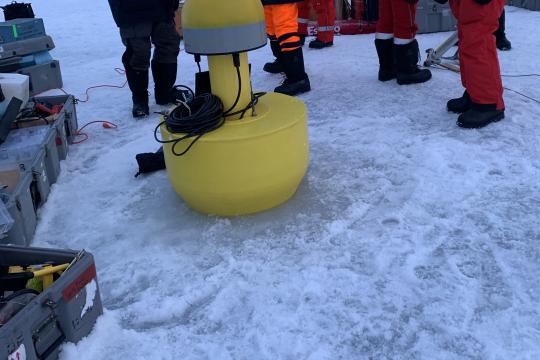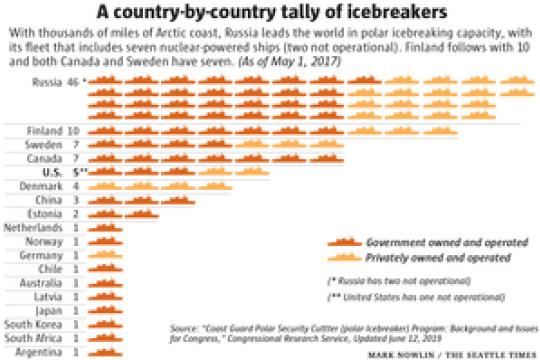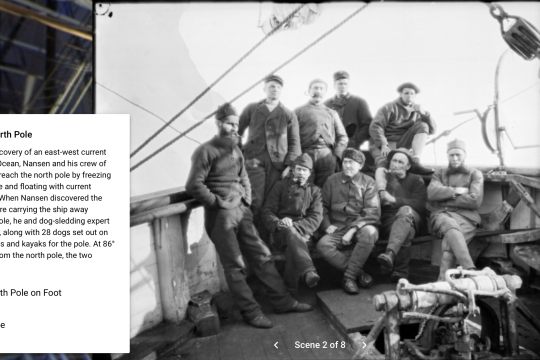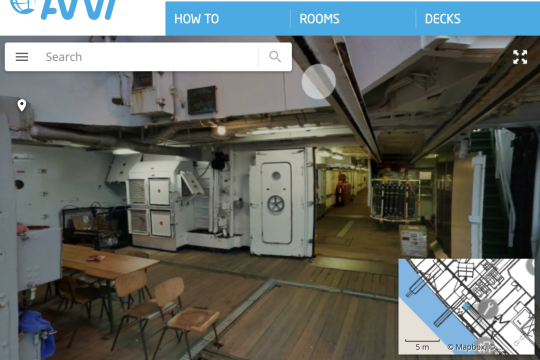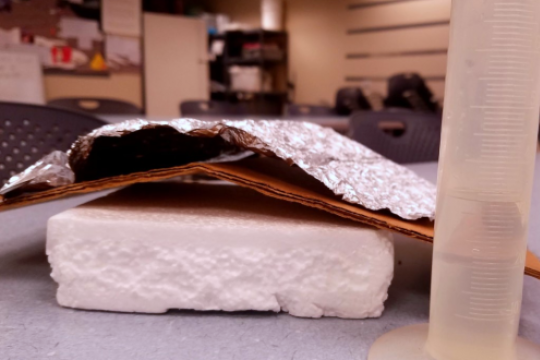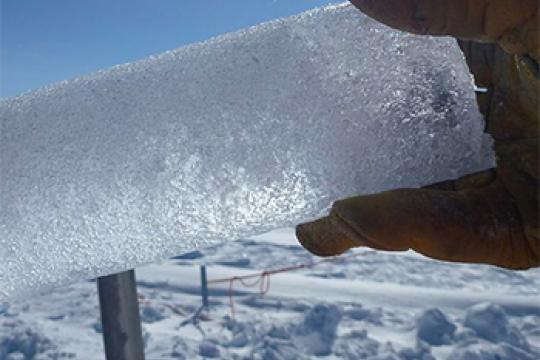Engineering and technology
Quick Bite: How did MOSAiC scientists study the Arctic atmosphere?
Learn about the various instruments scientists used to study the atmosphere during the 2019-2020 MOSAiC expedition in this Quick Bite activity.
Project of Mosaic Quick bite
Subject: Atmosphere, Earth science, Engineering and technology, Expeditions, mosaic monday, Physical science
Grade Level: Middle School, High School
Developer: CIRES
Learn about the various instruments scientists used to study the atmosphere during the 2019-2020 MOSAiC expedition in this Quick Bite activity.
Project of Mosaic Quick bite
Subject: Atmosphere, Earth science, Engineering and technology, Expeditions, mosaic monday, Physical science
Grade Level: Middle School, High School
Developer: CIRES
Quick Bite: Buoy Structure and Function
In this Quick Bite activity, your students will read about SIMB buoys, watch a video of a buoy installation during the 2019-2020 MOSAiC expedition, and then discuss the structure and function of a buoy. Photo credit: Anne Gold, CIRES/CU Boulder
Project of Mosaic Quick bite
Subject: Constructing explanations, Engineering and technology, Expeditions, mosaic monday, Oceans and ocean circulation
Grade Level: Middle School, High School, University/college
Developer: CIRES
In this Quick Bite activity, your students will read about SIMB buoys, watch a video of a buoy installation during the 2019-2020 MOSAiC expedition, and then discuss the structure and function of a buoy. Photo credit: Anne Gold, CIRES/CU Boulder
Project of Mosaic Quick bite
Subject: Constructing explanations, Engineering and technology, Expeditions, mosaic monday, Oceans and ocean circulation
Grade Level: Middle School, High School, University/college
Developer: CIRES
Quick Bite: Icebreakers of the World
Which countries in the world have icebreakers, and why? Explore these questions and more in this Quick Bite activity.
Quick bite
Subject: Engineering and technology, Expeditions, Geopolitics, mosaic monday
Grade Level: Middle School, High School
Developer: CIRES
Which countries in the world have icebreakers, and why? Explore these questions and more in this Quick Bite activity.
Quick bite
Subject: Engineering and technology, Expeditions, Geopolitics, mosaic monday
Grade Level: Middle School, High School
Developer: CIRES
Explore the Arctic virtually Aboard the Fram
Project of Mosaic Lesson plan
Subject: Engineering and technology, Expeditions, Geography, mosaic monday
Grade Level: Middle School, High School, University/college
Developer: CIRES
Project of Mosaic Lesson plan
Subject: Engineering and technology, Expeditions, Geography, mosaic monday
Grade Level: Middle School, High School, University/college
Developer: CIRES
Tour the Polarstern
Did you know the Polarstern is equipped with an indoor swimming pool? Hop aboard the Polarstern for this all-access, 3D virtual tour!
Project of Mosaic Quick bite
Subject: Engineering and technology, Expeditions
Grade Level: 3-5, Middle School, High School
Developer: CIRES
Did you know the Polarstern is equipped with an indoor swimming pool? Hop aboard the Polarstern for this all-access, 3D virtual tour!
Project of Mosaic Quick bite
Subject: Engineering and technology, Expeditions
Grade Level: 3-5, Middle School, High School
Developer: CIRES
Keep it Cool
When you put on layers to stay warm in the winter, or use a cooler to keep food cool, have you ever wondered about the science of thermal energy transfer? Challenge your students to utilize their understanding of thermal energy transfer and transformation to develop a simple, lightweight, and efficient method for storing and transporting ice cores.
NGSS Aligned Lesson plan
Subject: Engineering and technology, Physical science
Grade Level: 3-5, Middle School
Developer: Byrd Polar and Climate Research Center
When you put on layers to stay warm in the winter, or use a cooler to keep food cool, have you ever wondered about the science of thermal energy transfer? Challenge your students to utilize their understanding of thermal energy transfer and transformation to develop a simple, lightweight, and efficient method for storing and transporting ice cores.
NGSS Aligned Lesson plan
Subject: Engineering and technology, Physical science
Grade Level: 3-5, Middle School
Developer: Byrd Polar and Climate Research Center
Create Classroom Ice Cores
Students analyze two different ice core models (made of layers of ice frozen in pringles cans) to observe changes in past climates.
Lesson plan
Subject: Analyzing and interpreting data, Climate, Earth science, Engineering and technology, Physical science
Grade Level: Middle School, High School
Developer: Byrd Polar and Climate Research Center
Students analyze two different ice core models (made of layers of ice frozen in pringles cans) to observe changes in past climates.
Lesson plan
Subject: Analyzing and interpreting data, Climate, Earth science, Engineering and technology, Physical science
Grade Level: Middle School, High School
Developer: Byrd Polar and Climate Research Center
Design and Build a Sea Ice Drifter
In an engineering design challenge, students learn about sea ice and sea ice observation technology to build and design their own sea ice drifter.
Project of Mosaic Lesson plan
Subject: Asking questions, Constructing explanations, Engineering and technology, Physical science, Sea ice
Grade Level: 3-5
Developer: SMILE Oregon State
In an engineering design challenge, students learn about sea ice and sea ice observation technology to build and design their own sea ice drifter.
Project of Mosaic Lesson plan
Subject: Asking questions, Constructing explanations, Engineering and technology, Physical science, Sea ice
Grade Level: 3-5
Developer: SMILE Oregon State

